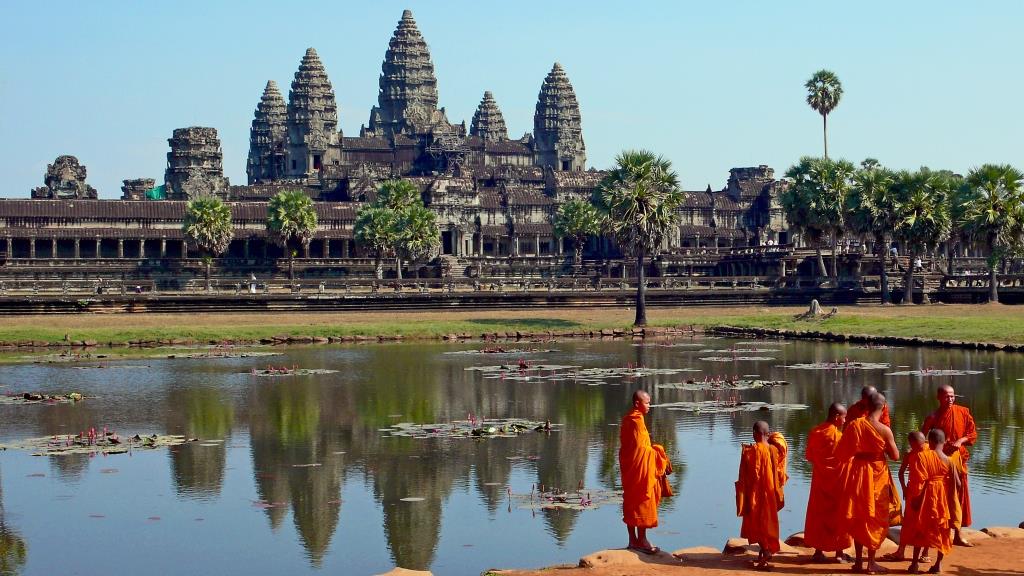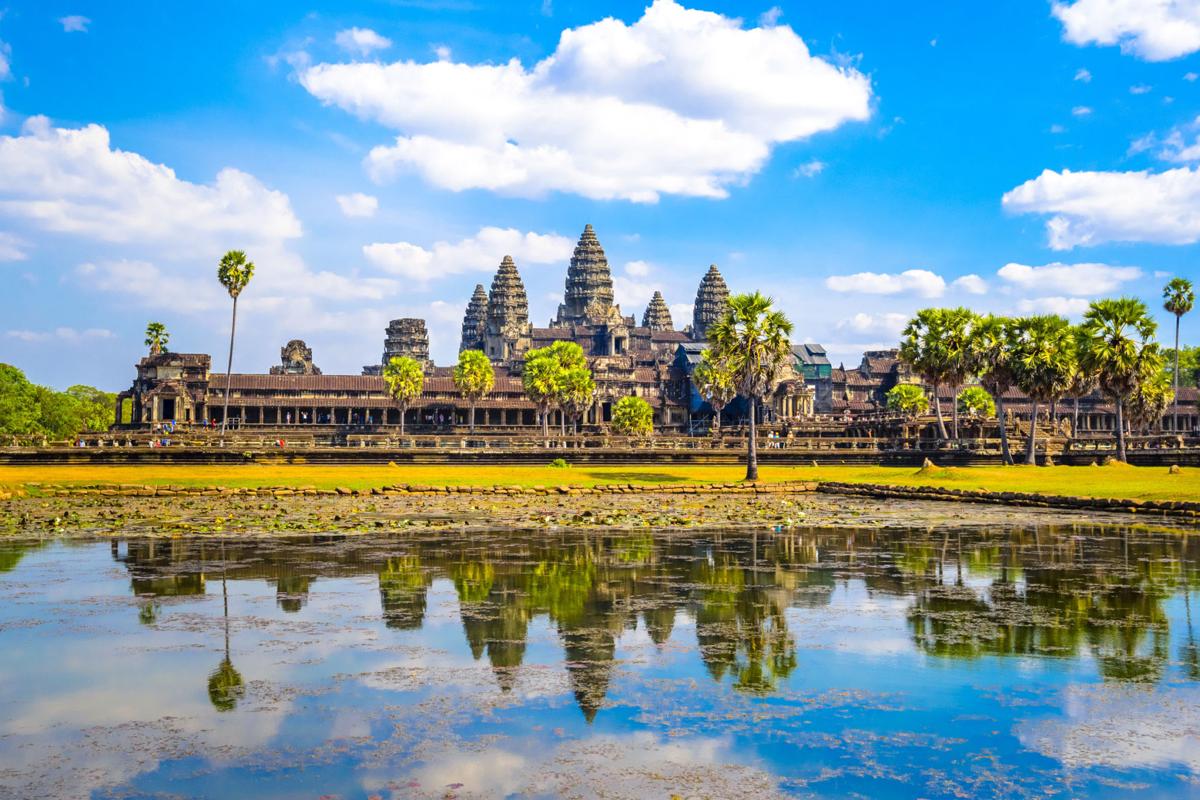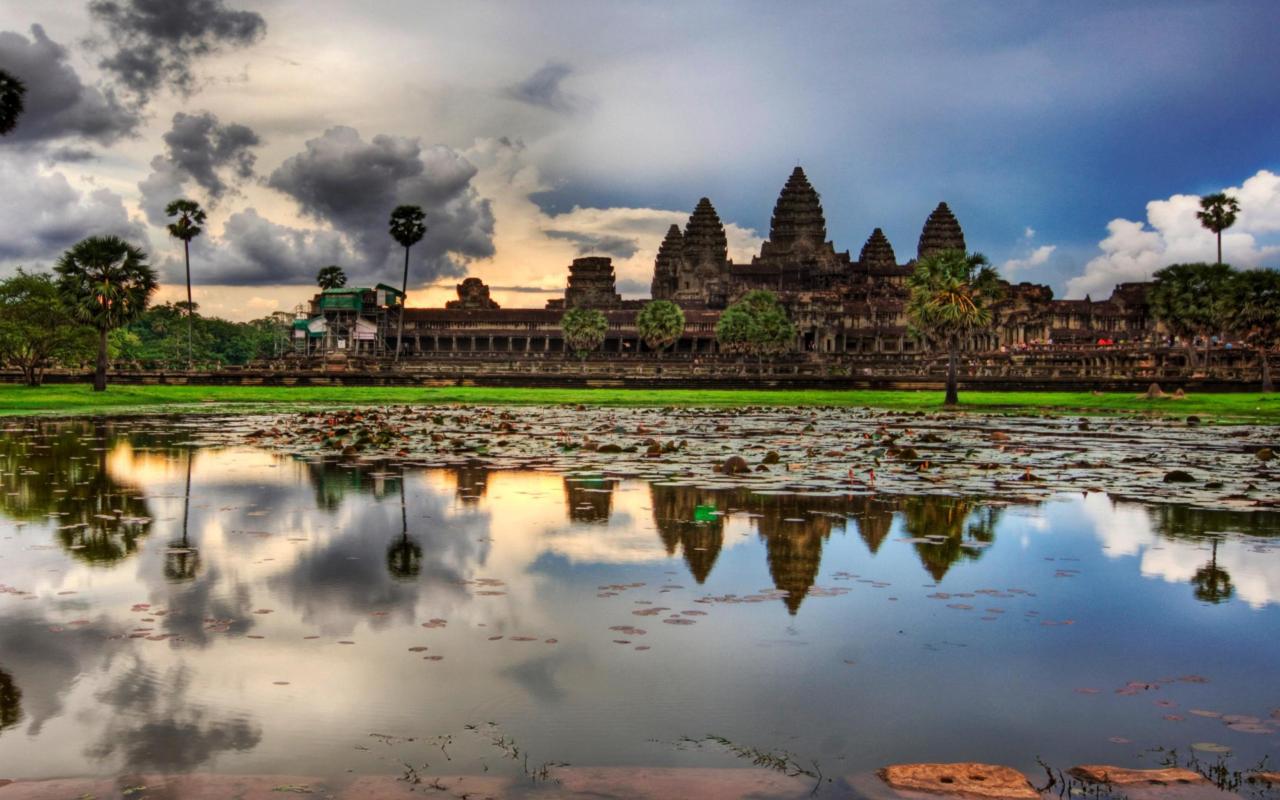There are literally hundreds of temples in Siem Reap and Cambodia - too many to mention here, but you can visit this website to get detailed information on many of them
The most famous is Angkor Wat.
Angkor wat (reference www.livescience.com)

Built between roughly A.D. 1113 and 1150, and encompassing an area of about 500 acres (200 hectares), Angkor Wat is one of the largest religious monuments ever constructed.
Originally built as a Hindu temple dedicated to the god Vishnu, it was converted into a Buddhist temple in the 14th century, and statues of Buddha were added to its already rich artwork.
Its 213-foot-tall (65 meters) central tower is surrounded by four smaller towers and a series of enclosure walls, a layout that recreates the image of Mount Meru, a legendary place in Hindu mythology that is said to lie beyond the Himalayas and be the home of the gods.
The city where the temple was built, Angkor, is located in modern-day Cambodia and was once the capital of the Khmer Empire. This urban center contains hundreds of temples and a population that has been estimated to be as high as 1 million people. It was easily the largest city in the world until the industrial revolution.
The temple is surrounded by a 650-foot-wide (200 meters) moat that encompasses a perimeter of more than 3 miles (5 km). This moat is 13 feet deep (4 meters) and would have helped stabilize the temple’s foundation, preventing groundwater from rising too high or falling too low.

Angkor Wat’s main entrance was to the west (a direction associated with Vishnu) across a stone causeway, with guardian lions marking the way. To the east of the temple was a second, more modest, entrance.
The heart of the temple was the central tower, entered by way of a steep staircase, a statue of Vishnu at top. This tower “was at once the symbolic center of the nation and the actual center where secular and sacred power joined forces,” writes researcher Eleanor Mannikka in the book "Angkor: Celestial Temples of the Khmer Empire" (Abbeville Press, 2002). “From that unparalleled space, Vishnu and the king ruled over the Khmer people.”

Construction techniques
Building Angkor Wat was an enormous undertaking that involved quarrying, careful artistic work and lots of digging. To create the moat around the temple 1.5 million cubic meters (53 million cubic feet) of sand and silt were moved, a task that would have required thousands of people working at one time.
The buildings at Angkor Wat posed their own challenges. To support them a tough material called laterite was used, which in turn was encased with softer sandstone that was used for carving the reliefs. These sandstone blocks were quarried at the Kulen Hills, about 18 miles (30 km) to the north, and were likely transported to the site by river.
Beneath the central tower was a shaft that leads to a chamber where, in 1934, archaeologists found “two pieces of crystal and two gold leaves far beneath where the Vishnu statue must have been,” Coe writes, adding that deposits like these “spiritually ‘energized’ a temple, much as a battery will provide power to a portable electronic device.”
Although Angkor Wat is dedicated to Vishnu the full purpose of the temple is still debated. One question is whether the ashes of Suryavarman II were interred in the monument, perhaps in the same chamber where the deposits were found. If that were the case it would give the temple a funerary meaning.
See more at: www.livescience.com

